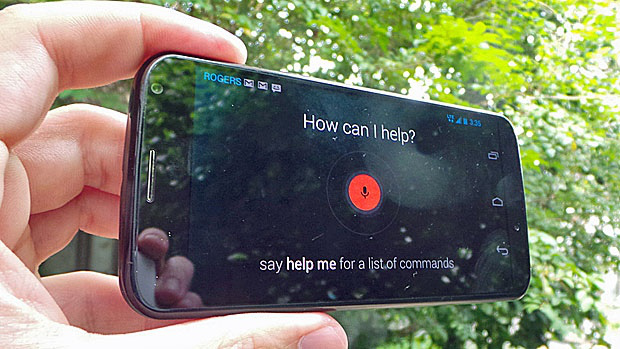 When I sat down to think about my 10 favourite gadgets of the year, I found myself hitting a wall - I actually couldn’t think of 10 that I liked all that much.
When I sat down to think about my 10 favourite gadgets of the year, I found myself hitting a wall - I actually couldn’t think of 10 that I liked all that much.
After a heady few years in which important new gizmos appeared just about every week, 2013 was more of an iterative time bereft of that One Big Thing. I tried to narrow my field down to five, but then figured heck, why cut corners? Why not just go with the one thing I really did like?
There were a few contenders. Obviously, I like the updated iPad Mini, which now has a sharper Retina screen. If it’s a case of what I use most, the Mini wins hands down - it goes everywhere and does everything with me. If it was waterproof, I’d probably use it in the shower. However, it is merely an iterative product that’s a touch better than its predecessor. That’s not enough for it to be my favourite new thing of the year.
I also like the Xbox one and the PlayStation 4 - both new consoles are fun and show a ton of promise. But they’re only as good as the games that are made for them, and so far there aren’t a whole lot of those, which is why I’m hesitant to bestow my Oprah-esque title on them.
I also recently wrote about how I like the Nexus 5 smartphone, not just because it’s a nice piece of hardware packed with some solid software, but also because of what it represents - the promise of a different future, where both phones and monthly cellphone plans are considerably cheaper than they are now. But nope, it too wasn’t my favourite.
If there’s one gadget from 2013 that was memorable for me, it’s the Moto X, the first smartphone from Motorola since its acquisition by Google last year. Amid a raft of similar devices, the Moto X stood out for me because of a few unique features.
As I wrote in my full review back in August, the device’s main selling point is its voice-commanded personal assistant. Unlike the iPhone’s Siri, however, the Moto X is always listening for its user to say those magic words: “Okay Google Now,” at which point it activates and takes direction.
Motorola achieved this through an ingenious and important innovation that dedicates part of its processor to the always-listening function. It’s a small compartmentalization, so the feature doesn’t use much battery life, which is key to the whole system. Other phones could probably pull this off, but without the specially designed chip, they’d probably run out of battery in short order.
Like most voice controls, the Moto X isn’t perfect - but it is pretty good. And because you don’t have to do anything other than talk to it to get it going, it’s not as aggravating when it messes up.
This compartmentalization of processing capabilities will be a hugely important function of smartphones going forward. Indeed, Apple has come to the same realizations as Motorola, with the iPhone 5S having a similar set-up with its M7 co-processor, which segments things like distance and motion tracking off from its main functions.
The 5S’s capabilities, however, will be dependent on app developers to show off while the Moto X already comes packaged with such a showcase in the form of Google Now. It seems like such a small innovation, but in 2013 those were the ones that counted.
